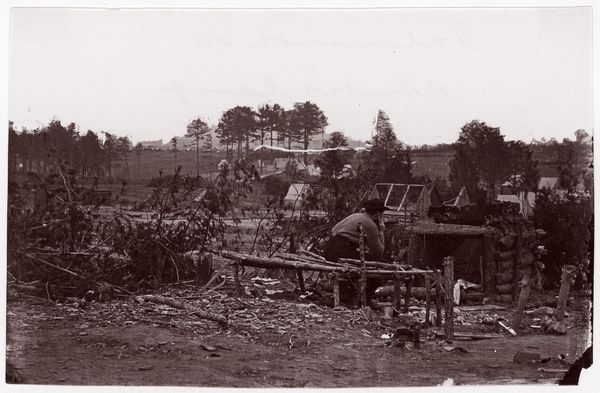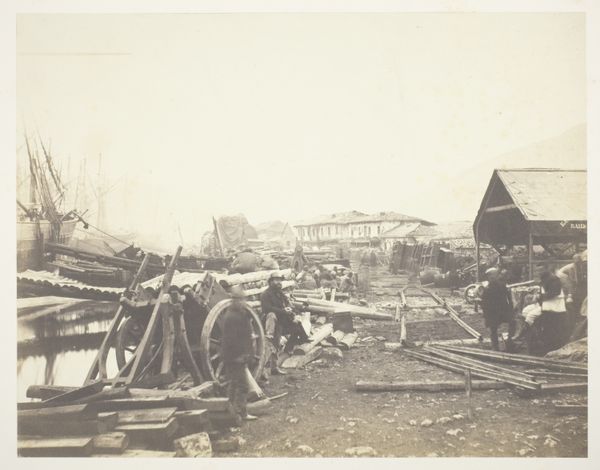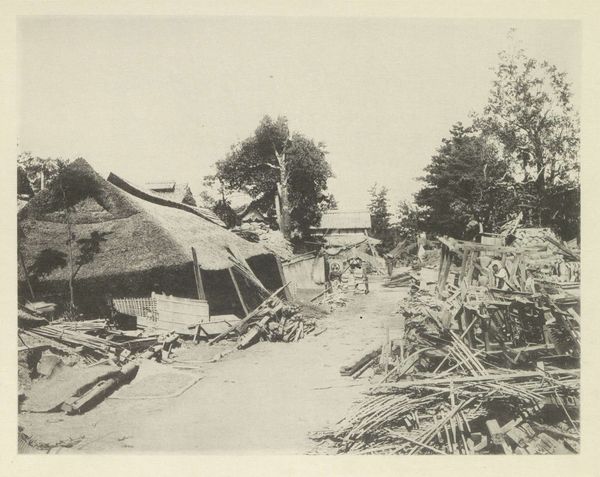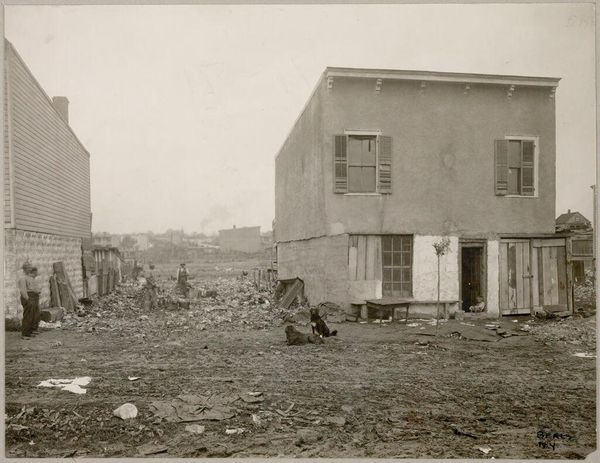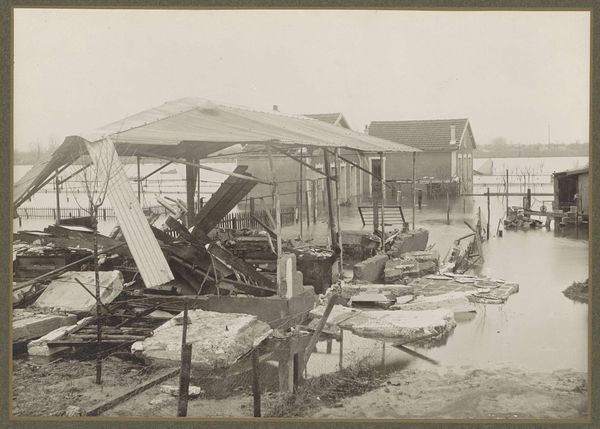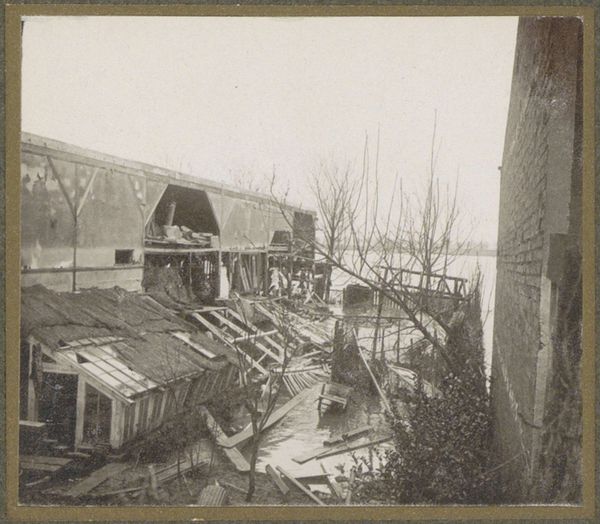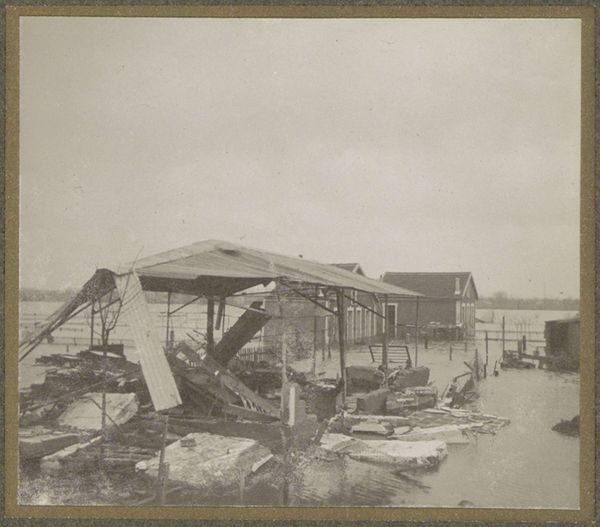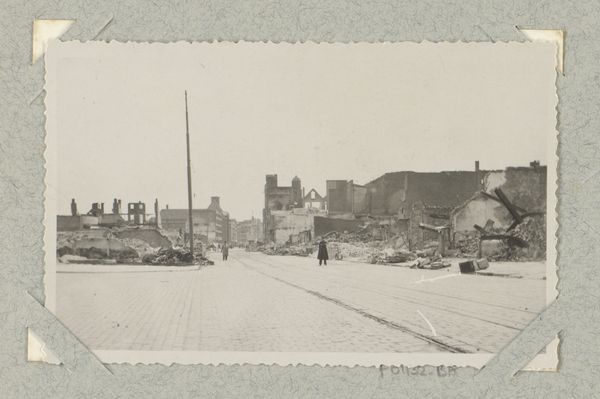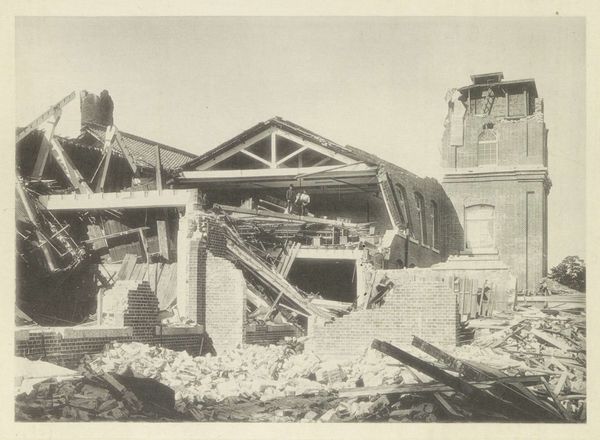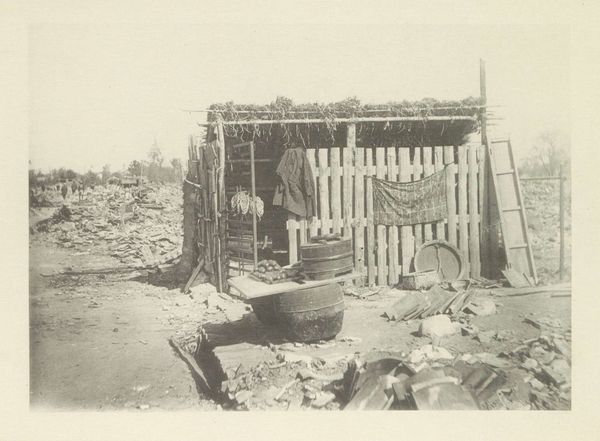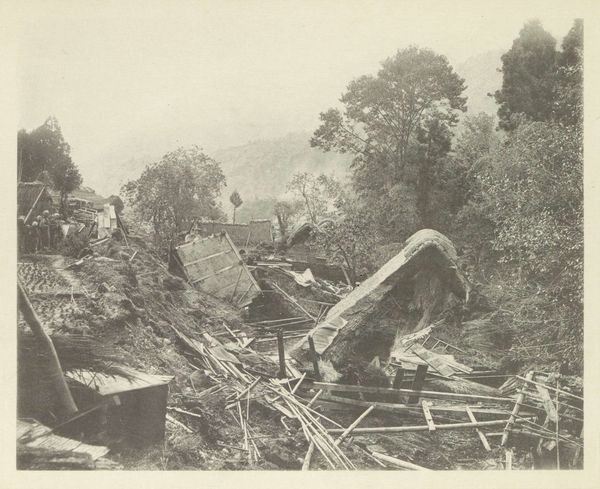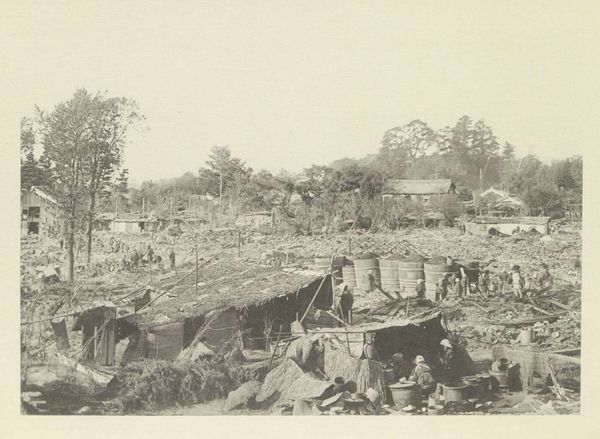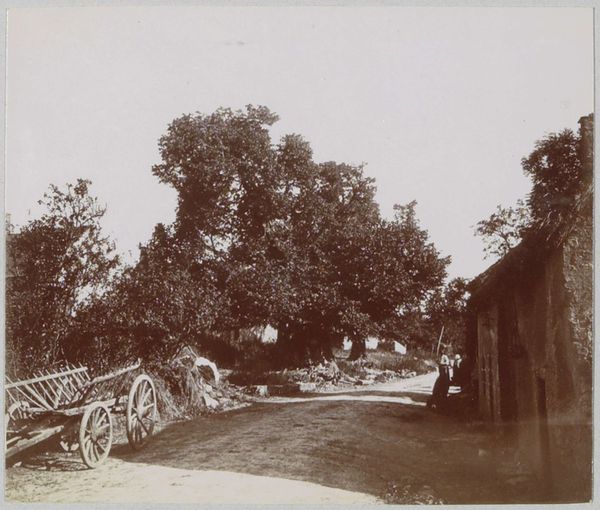
photography
#
landscape
#
outdoor photograph
#
outdoor photo
#
archive photography
#
photography
#
historical photography
#
monochrome photography
#
cityscape
#
monochrome
Dimensions: height 60 mm, width 90 mm
Copyright: Rijks Museum: Open Domain
Curator: Looking at this monochrome photograph entitled "Gebouwen met daarvoor wat los bouwmateriaal," or "Buildings with some loose building material in front of them," one is struck by the composition, and particularly its seemingly casual nature. The image, created sometime between 1940 and 1945, presents a cityscape, yet not in the triumphant or romanticized manner one might expect. Editor: It evokes a mood of disruption. The disarray of scattered materials in the foreground clashes sharply with the solid presence of the buildings in the background. It’s not your typical inspiring cityscape. Curator: Indeed. The eye is drawn not to architectural marvels, but rather to the "loose building material," an intriguing visual motif that prompts one to consider the state of the depicted location. What cultural context might yield so much… debris? It is almost like looking at aftermath. Editor: Considering the dating, the photograph seems laden with potential political narrative. The presence of those factory chimneys looming in the distance casts a long shadow. Are we seeing an image marked by the socio-political implications of industrial development, or worse - of wartime destruction? The arrangement certainly prompts unsettling questions about purpose and direction. Curator: That's a particularly relevant insight. Photography has often played a pivotal role during wartime, influencing the socio-political mood. Images like these, seemingly documenting a specific construction site, simultaneously create symbolic dialogues regarding cultural endurance and rebuilding through uncertain periods. The scattered materials become signifiers – fragments and hopes in the face of large powers. Editor: Yes, the monochrome palette seems intentional to remove all distraction, underscoring this very sense of stark realism. The photographer, whoever he or she might be, emphasizes that raw atmosphere. This work definitely avoids idealization; its strength is in prompting critical inquiries, and revealing hard narratives about urban spaces. Curator: In the end, perhaps, what strikes me most is its persistent ambiguity. As a historical and cultural piece, it invites a certain critical approach, but also stands alone as a potent commentary of the psychological state, with a visual echo still resonant to this day. Editor: Absolutely. What initially appeared as an ordinary cityscape now reverberates with silent stories about reconstruction, adaptation and societal strength through turbulent instances, which makes this quiet photograph so very powerful.
Comments
No comments
Be the first to comment and join the conversation on the ultimate creative platform.
